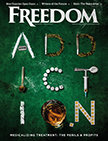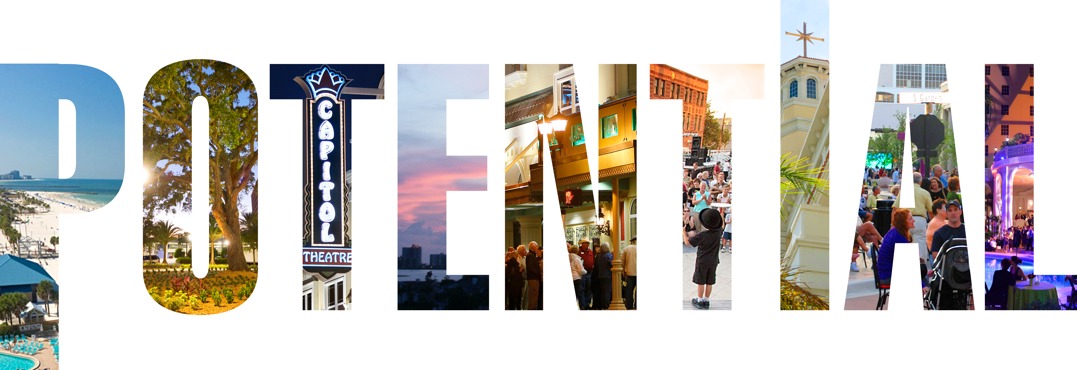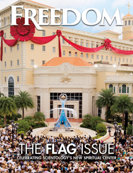Potential
One City, One Word
Surrounded by award-winning beaches, tranquil breezes, crystal waters, and the Guinness World Record for most days of consecutive sunshine in a single year, much of downtown Clearwater is still a curiously bland, municipal assemblage of retail stores, many filled, others empty. The area’s old low-slung buildings and arcane laws pose a civic puzzle of potential.
Let’s remember that word: Potential.
The only clear gravity evident in downtown is the gleaming multi-building complex of the Church of Scientology spiritual world headquarters.
True, there is a large waterfront park that has been a venue for more musical events than any outdoor park in Tampa Bay, including the world famous Clearwater Jazz Festival. And, most recently, the restored 93-year-old Capitol Theatre is actually attracting people downtown at nighttime. There is even a cool library downtown!
Problem is, everything else that is swag about downtown Clearwater is located somewhere else. Google “Clearwater + Culture” and read all about the Salvador Dali Museum in downtown St. Pete. The St. Pete/Clearwater Convention and Visitors Bureau lists 33 “Things to do in Clearwater”—only three of which are “things to do” downtown. The Clearwater Regional Chamber website proudly lists 19 museums, none of which are in Clearwater, much less downtown. Visitstpeteclearwater.com does not even list plain ol’ Clearwater as one of its promoted cities or towns!
Clearwater has tried nearly every chic downtown energizer scheme ever since the city’s core was “malled” to death by flashy suburban centers a half-century ago, or crippled by recessions. The efforts to “bring back” downtown were sewn into Clearwater’s fabric decades ago, long before the Church of Scientology arrived and, at least, began cleaning up the area and chasing away street crime.
Behind the scenes of swaying palms and warm Gulf breezes exists a multitude of crippled slogans, dashed dreams, broken promises and dead catchphrases—all stuffed in coffers filled by reams and reams of reports, studies, committees, surveys and boards that have done nothing but arouse frustration. Meanwhile, well-intended officials, business and civic leaders, and citizens complain: “I Can’t Get No Satisfaction,” a famous song, by the way, written by the Rolling Stones in downtown Clearwater in 1965, apparently one of the very last “cool” things to have ever happened there.
But there is that word: Potential.
What Clearwater could become is an enormous success, perhaps a cultural beacon, a must-go-to spot for the smart, savvy and gifted. That’s what Clearwater has: Potential.
“It’s just a matter of time,” says Pinellas County Commissioner Susan Latvala, who staunchly believes downtown is finally ready to get moving again. “Clearwater is a beautiful, beautiful city. Having this bluff and overlooking the water and overlooking the beach, it’s incredible.”
Theatre legend Zev Buffman, the president and CEO of Clearwater’s Ruth Eckerd Hall, just southeast of the downtown core, and a veteran of numerous downtown revitalization projects in Florida and elsewhere, wholeheartedly agrees: “And I think the timing could not be better, because things are changing Downtown. The change has begun. Or let’s say the end of ‘no change’ has come. A somewhat little and insignificant target, the Capitol Theatre has proved that the biggest names in the business will play there and that audiences will sell out 80 percent of the shows, in an area that was taboo. There is something there, got to build on it.”
And, downtown shop owner Paris Morfopoulos sees what it could be: “Clearwater has the potential to outdo the attractiveness or the draw that quaint little places like downtown Dunedin or downtown Safety Harbor have. For a couple of reasons. In Dunedin, across its causeway, there is no big batch of hotels with tourists sitting there that are sick of the beach. We have that. We have better views from here than on the beach. We have features, we have the transportation, we have the basic infrastructure.”
A veteran of numerous downtown redevelopment intrigues and personal interactions with downtown authorities, since he moved to the area in the mid-’70s, Morfopoulos, the chairman of the Downtown Development Board, says: “The things that are missing are a critical mass of things for locals to do. Like restaurants and shops in a dense enough mass to create a destination. Like downtown St. Pete—it’s packed every night. On a Saturday night, you can barely walk down there. Even on a Sunday afternoon, people are out there walking. Clearwater has just as nice a waterfront. We have a beautiful waterfront. We’re very accessible. We have the places, the vacant spots that aren’t otherwise already committed for some other purpose. We have the potential for doing it.”
Ten years ago, in this magazine, it was reported that Clearwater “was focusing on the redevelopment of the downtown core of the city. … The groundwork has been laid.” At that time, plans were well underway for a great deal of residential development—as many as 1,000 condo units and townhomes. That would have created the “critical mass” Morfopoulos mentioned.
But the great recession—especially brutal to Florida real estate—scuttled, at least temporarily, many of the plans.
The excitement of revitalizing downtown Clearwater has returned—with city officials, landowners and developers, retailers, and entertainment promoters picking up the scent. What’s different this time? Reality, for a starter. Not dreams, predictions or promises. Reality.
For nearly three decades, the Church has actually been downtown’s major redeveloper, renovating large parts of Clearwater—albeit its own properties. This includes upgrades of the Fort Harrison retreat, the Sandcastle Hotel, the Clearwater Building, the Oak Cove retreat, the Coachman Building, the old Travelodge in downtown—since christened the Mariner, three motor inns along North Fort Harrison, and the Osceola retreat. And the now-opened seven-story, 377,000-square-foot cathedral, the Flag Building, connected to the historic Fort Harrison by a sky bridge across Fort Harrison Avenue.
“Before, Scientologists used to come to do their services, be at the religious retreat for week or two or three, and then go home,” Morfopoulos recalls. “It was just a place where Scientologists from all over the world came, and then left. What’s changed is that there are now 10,000 of us that didn’t leave. Most people in Clearwater now either have neighbors, workmates or friends who are Scientologists or have some other type of interaction.”
USA Today in 2007 wrote of Clearwater: “Attitudes started a slow shift in the ’90s. Local politicians, recognizing a sizable voting bloc, started showing up at Scientology-sponsored candidate forums. Scientologists [got] involved in many civic groups and community improvement projects. Outsiders were invited into the Fort Harrison Hotel. …”
Political consultant Mary Repper was also quoted in the story: “Little by little, the barriers just disappeared. Now if you go to one of their events, you see more business leaders, more community leaders, more elected officials than any other event in the county. They recognize the Church’s value now, they see it was an integral part to the solutions of Clearwater.”
People are moving into downtown to live and work. Yes, it’s true. “The result is a growing consensus that the downtown neighborhood will not only be a source of community pride but prosperity,” concludes Morfopoulos. High-tech companies have moved, and are currently moving, into downtown. Spearheaded by several individual Scientologist-owned high-tech companies, there are reportedly 20 new companies (700 tech workers) now in the core downtown area, and this sector is growing. An association has been formed with government, business, and Scientology representatives in active pursuit of an initiative to recruit and promote downtown Clearwater as a destination for high-tech companies.
“We’re trying to make 700 tech employees into 1,500 or 2,000,” says Morfopoulos. “A lot of those people are going to be living in the developments that are going in downtown. They will contribute. People with disposable income, that live and work downtown. They will walk to work. They will patronize storefronts, coffee shops, fruit and vegetable stands, etc.”
An awakened Clearwater may find it’s not going to be easy. For the first time since Clearwater Mall opened its doors in 1973, there is actually a need, a “demand” for multifamily rental housing in downtown—up to 600 more units within the next five years would inspire a huge boost in retail activity. But Clearwater is now competing with other popular urban centers in the Tampa Bay area for development capital.
Capitol Theatre, vibrant in its 1920s splendor, has been a huge success right there on once-lonely Cleveland Street where the dilapidated Royalty Theatre stood. The theatre averages four to six shows per week, bringing some of the finest performing and theatrical artists in the world to downtown, as well as 500-700 paying patrons, from more zip codes than nearby Ruth Eckerd Hall, one of Florida’s finest performing arts centers.
“There are no nightmares downtown that keep people away, and the demographics are people in their 80s all the way down to people in their teens and 20s—which is a solid across-the-board salute to a downtown that can work,” beams impresario Buffman, who considers the Capitol renovation he directed as a proven and successful “step one” in downtown’s comeback: “The city proudly feels the ownership of the Capitol Theatre and its success in every fiber of its bones. They speak proudly about what happened… they realize for the first time in many years, we have true momentum—refreshing momentum—that can stop the nonsense of nobody will go there.”
Parking in the downtown is another issue which comes up often. Don’t talk parking with Susan Latvala. “You go to Starbucks to get a cup of coffee and you’ve got to put 50 cents in the meter. It boils my blood every day that I stop up there,” says the retiring 14-year commissioner, who is well aware that Dunedin’s no-parking charge policy fueled that town’s rebirth. “That’s just one thing. But, it’s not just any one thing. It’s all of them. I think for a very long time the City government just wanted to ignore downtown. Then they saw what happened in St. Petersburg and Dunedin.”
In June 2014, the City commissioned another in its long line of studies and reports. This one, by one of the nation’s leading think tanks, the Urban Land Institute, stressed the same conclusion that many previous reports had stated: The only way for downtown Clearwater to prosper is by a healthy partnership of the City and the Church of Scientology.
ULI’s chairman of the Clearwater study, architect William Kistler, summed up: “You’re at a fork in the road… there’s no stay-as-is. You can choose growth and prosperity, you can choose the kind of Clearwater we think you all want. But that’s going to require courage. Courage and compromise and collaboration. Sharing of vision. And some bold, decisive, leadership. Empowering your elected leaders, your city manager and his team, to do stuff. …
“And that’s really hard. Every city faces it. But that gets you to growth and prosperity. The alternative is bleak. It can get worse. It DOES get worse. Let me tell you. You continue stagnation and decline, and we will be here 10 years from now, and the problem will be worse. So I think, you know, this is a turning point. This is a key fork in the road for you.”
In other words, what Clearwater has is an abundance of one rare commodity: Potential.











